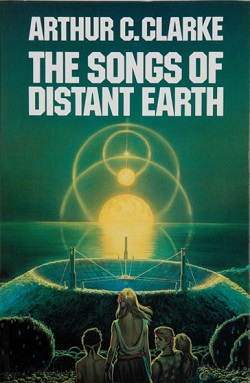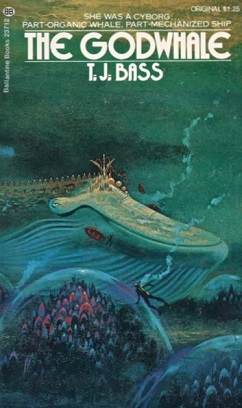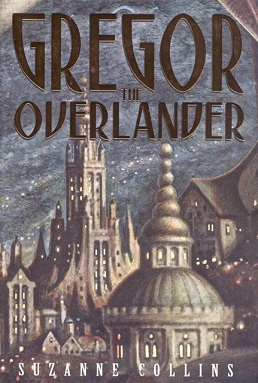Background
The novels are set on the planet of Harmony And Reason (HAR), settled by a slowship from twenty-second century Earth. The planet has been set up under the ideals of the New Fabian Society, "Responsible socialism," with social-political power linked to ownership of shares in the company. The colony is not very old, no more than two-three generations, and the total population is small (there is only one major settlement—George Bernard Shaw City), leading to the use of clones, known as "'Vats", created from tissue samples brought from Earth. This has led to the stratification of society between shareholders and the much more numerous debt-ridden vats—the debt arising from the charges for being grown, raised and educated,
Onto this planet have arrived the sea urchin like Korozhet who warn of an impending invasion by another alien species, the Magh. The novels are set a few years after the war has begun, with the Magh invasion proceeding slowly but towards inevitable human defeat.
HAR has an uneven technology base, manufacturing has settled on a level varying between the late nineteenth to early twentieth century, but the colonists also have the cloning equipment and a nucleus of 22nd century technology centered around the remains of the enormous slowship. The Korozhet have sold the HAR army two major technologies—slowshields and soft-cyber (cybernetic enhancement chips).
Slowshields, as the name suggests, are light-weight full-body forcefields that 'harden' when impacted by high-velocity impacts (greater than 22.8 mph) but are flexible the rest of the time—this has changed the war against the Magh' into grinding defensive close combat.
The soft-cyber makes stupid creatures smarter. These "uplifted" animals can be made to think and speak, and brain-damaged humans can be changed so their IQ matches their physical age, although using soft-cyber on humans is generally unknown on HAR. To augment the unavoidably small human army of vat conscripts the HAR technicians have genetically engineered and then uplifted two species to fight alongside them—rats and bats. Both are effective fighters but are not, perhaps, the most well-designed beings.
The rats are about the size of a small cats, mixing genes from the elephant shrew, with add-ons from real shrews and rats. With soft-cyber implants and vocal synthesizers they can fight alongside human troops. Their personalities are a mix of rat characteristics, the contents of their vocabulary ROM ("Shakespeare plays, Gilbert and Sullivan and... a reading of Steinbeck's Sweet Thursday"), and the driving pressures of their extremely high metabolic rates.
The bats were made after the rats, as an attempt to create "more heroic and idealistic helpers for mankind's war." Because of this their ROM contains "Irish revolutionary songs and old "Wobbly" tunes". They are more courageous than the rats but are also natural revolutionaries.
The Stories
The books focus on a single 'military' action and then its consequences. The scene moves between numerous characters, but there are some obvious heroes. The first, a group of one human, five bats, and seven rats; the second being the daughter of the Chief Executive Shareholder and her uplifted galago; the third one, an idealistic if intimidating MI major and his rattess aide; finally "And a large supporting cast, numbering in millions for the greatest production off Earth!"
Rats, Bats and Vats is centered on the one human, five bats, and seven rats. All soldiers, they are trapped behind Magh' lines during an assault—a situation that is universally terminal. They survive, cause considerable damage to the Magh', drink and eat considerably, and uncover some surprising secrets. On the human side they are aided by "the very model of a modern major" Fitzhugh and his colleagues, who grasp the opportunity created by the marauding group to fashion the first human victory in the war against the Magh'—despite the best efforts of the General Staff to 'snatch defeat'.
The Rats, the Bats and the Ugly deals with the consequences of ignoring the military chain of command, that is court martial, and the attempts to either reveal or cover-up the surprising secrets of the first book.

The Sontarans are a fictional race of extraterrestrial humanoids principally portrayed in the British science fiction television programme Doctor Who and its spin-off series The Sarah Jane Adventures. A warrior race characterised by their ruthlessness and fearlessness of death, they were conceived by writer and future story editor Robert Holmes and first appeared in the 1973 Doctor Who serial The Time Warrior.

Apocalyptic and post-apocalyptic fiction is a subgenre of science fiction in which the Earth's civilization is collapsing or has collapsed. The apocalypse event may be climatic, such as runaway climate change; astronomical, an impact event; destructive, nuclear holocaust or resource depletion; medical, a pandemic, whether natural or human-caused; end time, such as the Last Judgment, Second Coming or Ragnarök; or any other scenario in which the outcome is apocalyptic, such as a zombie apocalypse, AI takeover, technological singularity, dysgenics or alien invasion.

Krypton is a fictional planet appearing in American comic books published by DC Comics, most commonly appearing or mentioned in stories starring the superhero Superman as the world from whence he came. The planet was created by Jerry Siegel and Joe Shuster, and was named after the chemical element krypton. The planet was first mentioned in Action Comics #1 and made its first appearance in Superman #1 (1939).

Alien invasion or space invasion is a common feature in science fiction stories and films, in which extraterrestrial lifeforms invade Earth to exterminate and supplant human life, enslave it, harvest people for food, steal the planet's resources, or destroy the planet altogether. It can be considered as a science-fiction subgenre of the invasion literature, expanded by H. G. Wells's seminal alien invasion novel The War of the Worlds, and is a type of 'first contact' science fiction.

Science fiction is a film genre that uses speculative, fictional science-based depictions of phenomena that are not fully accepted by mainstream science, such as extraterrestrial lifeforms, spacecraft, robots, cyborgs, mutants, interstellar travel, time travel, or other technologies. Science fiction films have often been used to focus on political or social issues, and to explore philosophical issues like the human condition.

The Cybermen are a fictional race of cyborgs principally portrayed in the British science fiction television programme Doctor Who. The Cybermen are a species of space-faring cyborgs who often forcefully and painfully convert human beings into more Cybermen in order to populate their ranks while also removing their emotions and personalities. They were conceived by writer Kit Pedler and story editor Gerry Davis, and first appeared in the 1966 Doctor Who serial The Tenth Planet.

Fallen Dragon is a science fiction novel by British writer Peter F. Hamilton. It was first published in 2001 by Macmillan. It follows the adventures of the mercenary Lawrence Newton as he attempts to capture what he believes is a fabulous treasure, only to find something of much greater importance.

The Songs of Distant Earth is a 1986 science fiction novel by British writer Arthur C. Clarke, based upon his 1958 short story of the same title. Of all of his novels, Clarke stated that this was his favourite. Prior to the publishing of the novel, Clarke also wrote a short step outline with the same title, published in Omni magazine and anthologised in The Sentinel in 1983.
The Uplift Universe is a fictional universe created by American science fiction writer David Brin. A central feature in this universe is the process of biological uplift.

The Uplift War is a 1987 science fiction novel by American writer David Brin, the third book of six set in his Uplift Universe. It was nominated as the best novel for the 1987 Nebula Award and won the 1988 Hugo and Locus Awards. The previous two books are Sundiver and Startide Rising.

The Godwhale is a science fiction novel by American novelist T. J. Bass, first published in 1974. It is the sequel to Half Past Human. The book was nominated for the Nebula Award for Best Novel in 1974. The novel deals with genetic and biological inventions with a strange and mystical twist.

Homeward Bound (2004) is a science fiction and alternate history novel by Harry Turtledove. It is the eighth and final work in his Worldwar series fictional universe. It follows the events of the Colonization trilogy and gives some closure to the storylines.
The Worldwar series is the fan name given to a series of eight alternate history science fiction novels by Harry Turtledove. Its premise is an alien invasion of Earth during World War II, and includes Turtledove's Worldwar tetralogy, as well as the Colonization trilogy, and the novel Homeward Bound. The series' time span ranges from 1942 to 2031. The early series was nominated for a Sidewise Award for Alternate History in 1996.
The Eight Worlds are the fictional setting of a series of science fiction novels and short stories by John Varley, in which the Solar System has been colonized by human refugees fleeing an alien invasion of the Earth. Earth and Jupiter are off-limits to humanity, but Earth's Moon and the other worlds and moons of the Solar System have all become heavily populated. There are also minor colonies set in the Oort cloud at the edge of the Solar System. Faster than light travel is not possible, though it is mentioned that test-flights will begin soon at the end of The Golden Globe, and the species has not as yet managed to extend itself to other stars.

The Golden Globe is a 1998 science fiction novel by American writer John Varley. The book takes places a few years after the conclusion of Steel Beach. It was nominated for Best Science Fiction Novel during the 1999 Locus Awards.
Dave Freer is a South African–born, Australian-based, award-winning science fiction author writing mostly humorous or alternate history novels.
The Alliance–Union universe is a fictional universe created by American writer C. J. Cherryh. It is the setting for a future history series extending from the 21st century into the far future.

Gregor the Overlander is a children's epic fantasy novel. The book was written by Suzanne Collins and was published in 2003 as the first book of The Underland Chronicles. It was received well by critics, and was listed as one of New York Public Library's 100 Books for Reading and Sharing. It was featured by National Public Radio in 2005.

The space-opera blockbuster, Star Wars franchise has borrowed many real-life scientific and technological concepts in its settings. In turn, Star Wars has depicted, inspired, and influenced several futuristic technologies, some of which are in existence and others under development. In the introduction of the Return of the Jedi novelization, George Lucas wrote: "Star Wars is also very much concerned with the tension between humanity and technology, an issue which, for me, dates back even to my first films. In Jedi, the theme remains the same, as the simplest of natural forces brought down the seemingly invincible weapons of the evil Empire."












